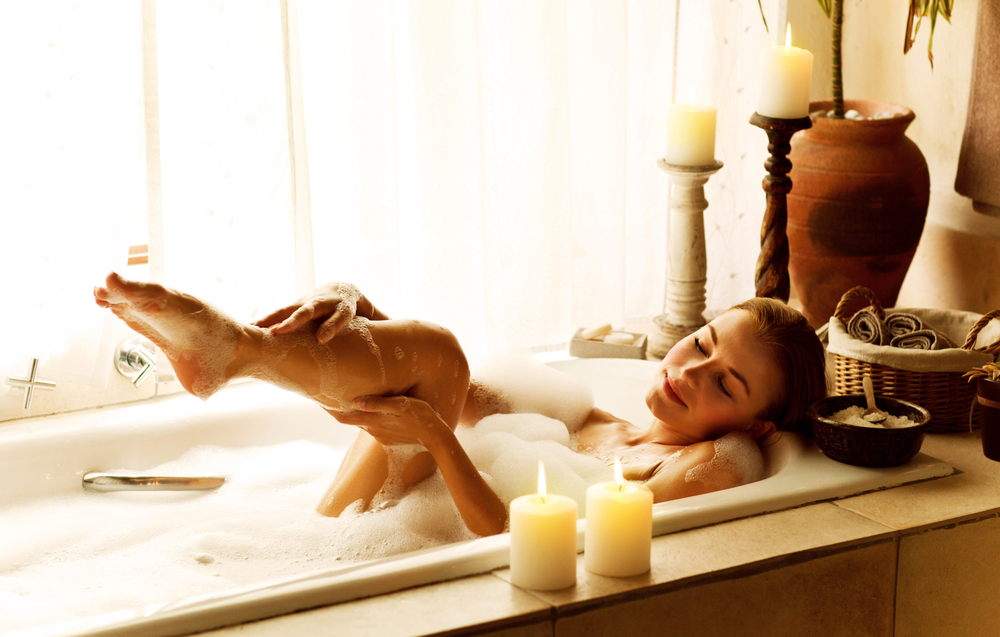Guest post by Chris Long at Home Depot: At some point, we’ve all done it – we’ve gone on vacation and said “forget about it!” when it comes to being careful about indulging in everyday luxuries. We’ve cranked the thermostat as far as it would go, we’ve taken extra-long showers, and we’ve left the lights on in every room even when we’re not there. Because, heck, we’ve already paid for the rental, so we might as well use it, right?
This “vacation waste” mentality is the bane of most vacation home owners’ existence. And not only does this attitude drive up the cost of renting the home for future vacationers, it’s also a strain on the local environment and your own pocket.
But how do you curb this mentality without impinging on your renters’ stays? By giving your house the ability to do some of the saving for you.
Curbing Electrical Usage
The biggest wastes in terms of electricity in a vacation home are lights, electronics and temperature. But there are ways to cut down on all of these without your renters even noticing. In fact, if they do notice, they might consider it an upgrade.
Lights On, Lights Off
While installing an entire smart home package can get pretty pricy, you can selectively install smart home elements without incurring the total smart home cost. Take your rental home’s lights. If you’re having problems with renters leaving them on at all hours of the day and night, even when they’re not there, you can cut down on these electrical drains by installing intelligent switch controls.
WeMo Home Automation, for example, offers a wirelessly controlled switch that connects to a motion detector, which you can place anywhere in your home. By connecting your lights, the television, or any other electrical device you want to control to the switch, you can set the switch up to:
- turn the device on when people walk into the room,
- switch off when no motion is detected after a certain period of time, or
- place the device on a schedule that you can alter as needed.
Additionally, you can control the switches wirelessly, so once your renters leave, you can switch all of the connected devices off with the click of a button on your smartphone. WeMo switches can be purchased by the piece, too, so you can install them one at a time, as needed, instead of purchasing an entire system.
Hot Water on Demand
Traditional water heaters work by keeping a tank of water heated at all times in an insulated storage container. Maintaining the heat of up to 80 gallons of water on a constant basis can be a big drain on your electrical or gas usage. Instead, consider installing an energy-efficient tankless hot water heater. By heating water only on demand, you cut down not only on those “standby losses” incurred from storage water heaters, but you also help to ensure a steady supply of hot water.
As an added bonus, most homeowners can get a tax credit for installing a tankless hot water heater.
Perfect Temperature, Every Time
Thermostats make up half of your home’s energy expenditure. But instead of putting a lock on your thermostat or letting renters crank the temperature to ridiculous settings, let your thermostat do the work by intelligently keeping the house at just the right temperature. The Nest thermostat is a great example of intelligent temperature control. Another device that you can control wirelessly from your smartphone, the Nest learns from its surroundings, determining how long it takes to bring certain rooms up to the ideal temperature and adjusting power usage so that you can set it to maximize energy efficiency without affecting comfort levels.
The Nest also includes an “auto away” feature that senses when people are not present in the house and automatically switches to Away mode. You can also:
- Track your home’s energy usage online
- Use the Airwave feature to cut down on air conditioning costs
- Use the Auto-Tune feature to automatically adjust to new ways of lowering your energy bill while maintaining optimal temperatures
- Dehumidify humid homes
Curbing Water Usage
Low-flow fixtures are the best way to cut down on abundant water usage without cutting down on comfort. By using a combination of aeration and water pressure, low-flow showerheads, for example, can mimic the luxury of a standard showerhead while using up to three times less water. You can also install low-flow faucets and low-flow toilets without impacting the luxuriousness of your home.
For a quick water usage fix, you can also place filled water bottles in toilet tanks to cut down on the amount of water used with each flush.
Cutting down on electrical and water costs in your vacation home doesn’t mean cutting down on your renters’ experience. A few adjustments, and some intelligent electronics here and there, can go a long way toward making a vacation rental easier not only on the environment but on your wallet, as well.








[…] 2. Curbing “Vacation Waste” Mentality: How to Cut Down on Utility Costs without Spoiling Your Vacat…: This is a guest post written by a Home Depot representative on WeNeedaVacation.com blog. Awesome to see Home Depot taking notice of the industry! Again, written more towards a single home with the need to manage a large inventory, but the direction is clear: there is a definite need for smart home control in the vacation rental industry. […]
[…] Curbing “Vacation Waste” Mentality: How to Cut Down on Utility Costs without Spoiling Yo…“Vacation waste” mentality drives up the cost of renting a vacation home and puts a strain on the local environment, not to mention a homeowner’s pockets. Here’s how to curb this mentality without impinging on a renter’s stay. […]
[…] find some great ideas on this post from a guest blogger from Cape Light Compact and another post from Home Depot. And for some ideas for renewable energy projects, check out this […]
[…] Curbing "Vacation Waste" Mentality: How to Cut Down on Utility Costs without Spoiling Your… […]
[…] 2. Curbing “Vacation Waste” Mentality: How to Cut Down on Utility Costs without Spoiling Your Vacat…: This is a guest post written by a Home Depot representative on WeNeedaVacation.com blog. Awesome to see Home Depot taking notice of the industry! Again, written more towards a single home with the need to manage a large inventory, but the direction is clear: there is a definite need for smart home control in the vacation rental industry. […]
While in concept the idea of lights switching themselves on and off is a good one in theory, I find that it becomes most annoying when after a moment we need to do the light wave periodically. This is especially so when I am writing quietly and then must jump up in order to get the light back on. It becomes a 7th-ining stretch exercise.
Good point, Donna. The key is installing a three-way switch. I have one in my laundry room that has three settings: On, Off, and Motion. I keep it mostly on Motion so I can grab a load of laundry out of the dryer and not have to do the “elbow-switch-looking-over-the-laundry-pile” dance on my way out. But if I’m in the room for awhile ironing, I switch to On and the light stays on until I switch it off or back to Motion. Best, Shannon